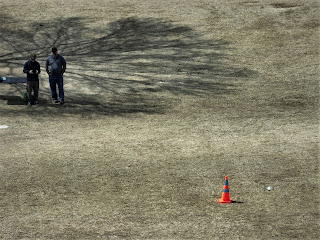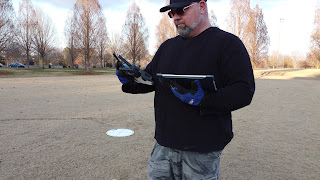10 Tips for Beginner Drone Pilots - 016
Welcome to drone flying new drone pilots, you have embarked on an exciting journey no matter what type of drone flying you want to do such as, recreational RC park flying, start an aerial photography/videography business, or First Person View (FPV) racing, just to name a few. The world of drone flying in the US is changing dramatically this year with respect to the regulatory scene. In this article we offer 10 tips, mostly flying tips, for new drone pilots.
The later part of the article we will discuss the regulatory side of the equation. Let’s jump in feet first with the Top 10 Tips:
1. Consider hiring a flight instructor or searching out a mentor to learn the basics. One of my best customers said upon our first lesson, “I would rather crash your drone than mine.” It took me a minute to get over this barb, but a selling point is a selling point. In all seriousness, in addition to being under the watchful eye of an instructor or mentor helps lessen the learning curve and allow for questions to be answered on site.
2. Practice flying by starting slowly, begin with hovering at 10 feet above the ground, next fly left and right, forward and back maintaining proper sensing, meaning the camera is positioned forward, as if it’s a cockpit and the pilot is flying forward. What’s the reason? To stay away from reverse sensing, when inputs are opposite of normal. In other words, left control input takes the drone right, and vice versa. Additionally, forward control input results in the drone flying backwards.
3. Resist the temptation to take unnecessary risk, like trying to fly through a culvert as an inexperienced drone pilot. Ask me how I know? Doing risky maneuvers can be an expensive lesson, not to mention a safety hazard.
4. Search out a wide-open field, free of obstacles for flying practice. Flying in the backyard may sound like a no-brainer but consider a very large field in-case the aircraft is out of control.
5. Use Cinematic Mode or the slow flight mode setting. “Easy Does It,” is the motto of the training day.
6. Read the owner’s manual, most people don’t, and they are missing out on learning important information. Study up before arriving in the flight area.
7. Learn the app settings (or integrated screen functions) of your drone and take time to set them up properly, for instance, compass calibration, Return To Home (RTH) settings, battery warning, etc. Starting out it’s a good idea to get into the habit of calibrating the company, we affectionately call it the Drone Dance (hold the drone horizontal, spin around, move the drone vertical, spin around, etc.).
8. Don’t over rely on proximity/anti-collision sensors but use them, however, note rule 9. Assume proximity sensors will not work properly, because they have their short comings. If you fly as if they don’t work, it may save you in the long run.
9. Realize your eyes will deceive you, for example, the wall you are trying to fly close to may be closer than you think. While we have depth perception there are shortcomings to this human system. We suggest having a Visual Observer (VO) at the perpendicular ninety-degree point to assist with proximity to the obstacle.
10 Let Go. If you’re nervous about being able to maintain control of the drone, simply let go (assuming stability control is working). Note: Flying in manual or “addy” mode is way different than the other stabilized modes (normal, sport, precision) requiring full attention to maintain control. For example, while in manual mode, a wind gust requires the pilot to actively compensate for wind drift. We suggest gaining a lot of experience in stabilized modes before learning how to fly in manual mode and doing that with an instructor or mentor.
The regulatory side is omitted from the Top 10 list to not drag our readers down with the important, but less than exciting side, of flying a drone in the modern age. Here’s some quick take-aways to make the process painless as possible:
· - Take the FAA TRUST test online, it’s FREE and a must for recreational drone pilots. TRUST covers basic safety information that serves as a good foundation for safety.
· = Register your drone(s) on the FAA Drone Zone, it’s required for every drone that weighs more that 250 grams and all drones operated commercially. Note the massive interest in the “Sub 250 Gram” movement.
· = Remote Identification, also known as Remote ID, will dramatically affect recreational and commercial drone flying by requiring what the FAA has described as a “digital license plate” on all drones except the Sub 250-gram recreational drones. Remote ID allows the tracking of drone and controller location, including vertical location, as in altitude. Manufacturers were required to integrate Remote ID as of late 2022 (September, then delayed to December). Add-on modules will be required September 16, 2023, for existing drones that are not equipped. There is an opportunity not to equip other than the Sub 250-gram route by flying in special areas, like an RC park, called FAA Recognized Identification Areas (FRIA). As you might imagine, this has created quite stir from those in the RC/drone world.
* *Earning money with your drone: Those interested in making money with your drone will need to earn FAA Remote Pilot certification, or Part 107 certification. The only requirement is to pass an FAA test, which can be done at an FAA approved testing center. Preparing for the test can be done via self-study, which is one of the products we offer. Check out our video-based course and feel free to ask us any questions you may have.
Learning something new takes patience, so don’t be too hard on yourself when practicing maneuvers. The best success stories are those that take complex flying exercises and breaks them down into manageable chunks, we call this the building block approach. If you’re becoming frustrated while practicing a specific maneuver, switch it up and try something different then come back to the one you were having difficulty. As mentioned, don’t be afraid to get a flight instructor or mentor, they can save you a lot of time by knowing how to build upon the skills you have mastered. Check out other articles that will expand upon this topic:
· 10 Essential Tips to Fly a Drone Legally and Safely
· Drone Regulations: What You Need to Know Before You Fly
TC Freeman is the Chief Instructor for the RemotePilotAssociation.com (RPA) and has a passion for helping recreational and commercial drone pilots learn to fly and earn FAA commercial Remote drone Pilot certification through live, hybrid or self-study courses.
Join us for our annual JUNE-JULY New Membership “OPEN HOUSE,” a FREE-no obligation bi-weekly webinar where we discuss drone business, certification, and re-currency. Email us to RSVP.
#drone,#dronephotography, #dji
Copyright 2023, Remote Pilot Association (TC Freeman)






Comments
Post a Comment